LIFE CYCLE OF A STAR
Stars are magnificent, distant objects that have fascinated humans for millennia. Yet, they are far more than just twinkling points of light in the night sky. Stars undergo dynamic changes over millions to billions of years, evolving from simple clouds of gas to sometimes cataclysmic endpoints. This blog will guide you through the incredible life cycle of a star, from its formation to its eventual death.
Birth of a Star: Nebula to Protostar
Stars are born in large clouds of gas and dust called nebulae. These clouds primarily consist of hydrogen, the most abundant element in the universe. Over time, due to gravity, pockets of gas and dust within the nebula begin to collapse inward, forming dense regions. As the gas compresses, the temperature rises, eventually leading to the formation of a protostar, the first stage of a star's life. These regions are often hundreds of light-years across and can contain enough material to form thousands of stars. A famous example of a star-forming nebula is the Orion Nebula, located 1,344 light-years from Earth. This stage can last for 10 million years.
A protostar will have a temperature between 2,000 and 3,000 K. The mass can range from a fraction of the Sun’s mass to many times its size. Protostars with masses below approximately 0.08 M☉ (solar mass) never achieve the temperatures necessary for hydrogen fusion to begin. These are referred to as brown dwarfs. They emit faint light and gradually cool over hundreds of millions of years.
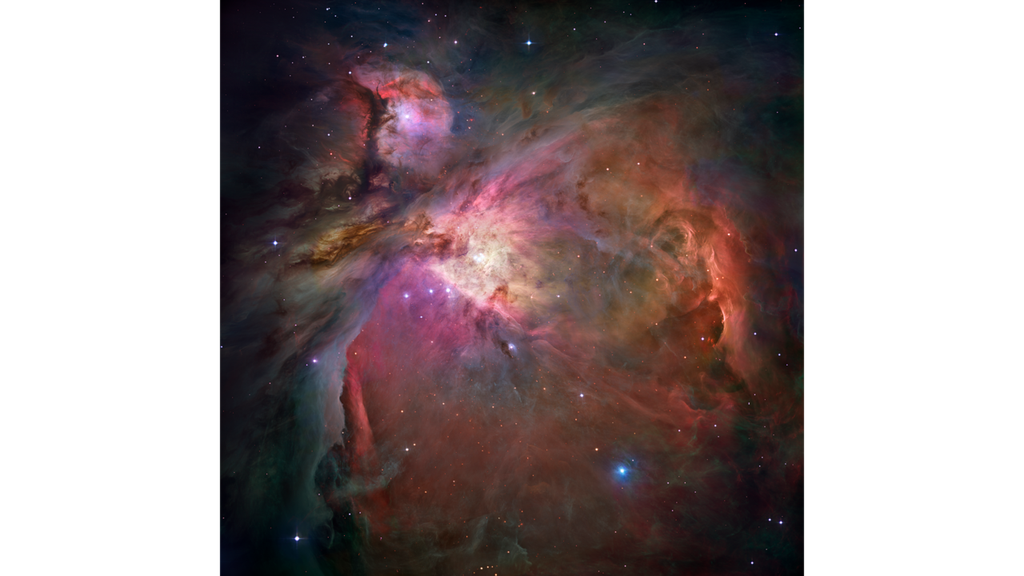
Messier 42 (Orion Nebula)/NASA
Main Sequence Star: The Longest Phase
Once the protostar's core temperature reaches 10 million Kelvin, nuclear fusion ignites. This is the process where hydrogen atoms combine to form helium, releasing tremendous amounts of energy. The star then enters the main sequence, where it spends most of its life.
Nuclear Fusion and Energy Production:
The Sun, a typical main-sequence star, converts 600 million tons of hydrogen into helium every second, releasing energy equivalent to 3.8 x 10^26 watts.
A star like the Sun (1 solar mass) will stay in the main sequence for around 10 billion years, while more massive stars burn through their fuel quickly and might only last for a few million years.
Hertzsprung-Russell (H-R) Diagram:
Stars on the main sequence can be plotted on an H-R diagram, showing a relationship between their temperature and luminosity. Most stars, including the Sun, lie on this "main sequence."
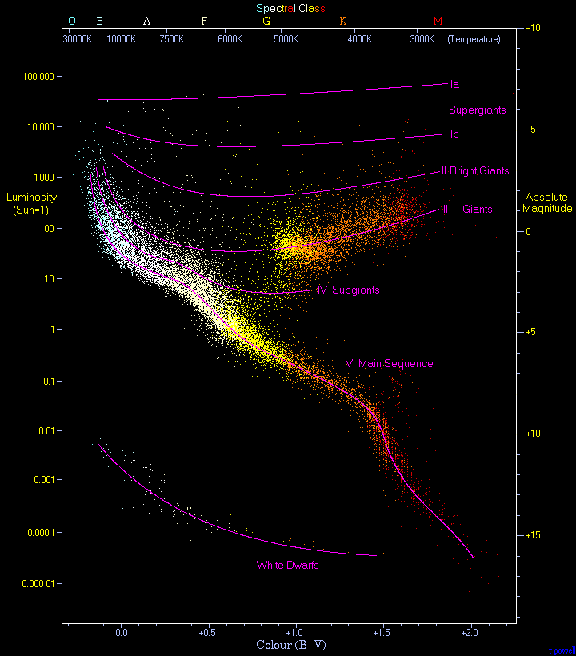
The Hertzsprung-Russell Diagram/Richard Powell
Small, relatively cool, low-mass stars called red dwarfs burn hydrogen slowly and will stay on the main sequence for hundreds of billions of years or even longer. In contrast, massive, hot O-type stars will exhaust their hydrogen and leave the main sequence after only a few million years. A mid-sized yellow dwarf, such as the Sun, remains on the main sequence for around 10 billion years. The Sun is believed to be approximately halfway through its main sequence phase.
Red Giant or Supergiant Phase: The Aging Star
As a star runs out of hydrogen in its core, it can no longer maintain the fusion reaction, causing the core to contract and the outer layers to expand. For medium-sized stars like the Sun, this creates a red giant. For massive stars, the process leads to the formation of supergiants.
Red Giant Transformation:
In around 5 billion years, the Sun will become a red giant. It will expand to a radius of approximately 1.2 AU (about 170 million kilometers), likely engulfing the inner planets, including Earth. The core temperature of a red giant reaches up to 100 million K, allowing the fusion of helium into heavier elements like carbon and oxygen.
Supergiants:
Massive stars, such as Betelgeuse (located in the constellation Orion), are in the supergiant phase. These stars can be over 1,000 times larger than the Sun and can fuse heavier elements like silicon and sulfur in their cores.
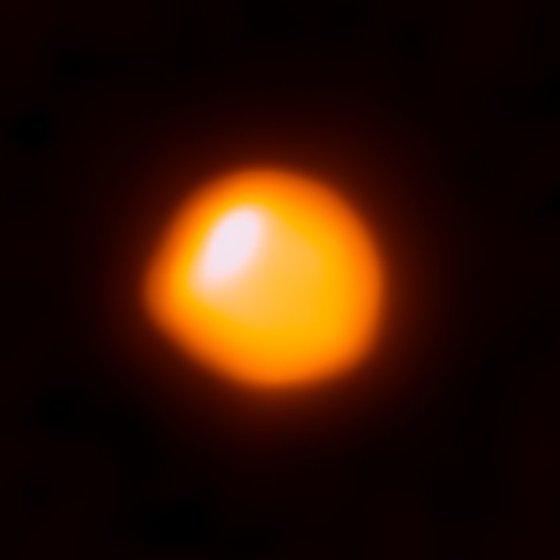
Betelgeuse/ALMA
Death of a Star: White Dwarf, Neutron Star, or Black Hole
The ultimate fate of a star is determined by its initial mass. Depending on this mass, a star will end its life as a white dwarf, a neutron star, or a black hole.
White Dwarf: The Fate of Low to Medium-Mass Stars (Like the Sun)
For stars with an initial mass less than 8 times the mass of the Sun, once helium fusion in the core is complete, they will shed their outer layers, creating a beautiful planetary nebula around the remaining core. What’s left behind is a compact remnant called a white dwarf.
A white dwarf is incredibly dense, roughly the size of Earth but containing a mass comparable to the Sun. The density of a white dwarf is about 1 x 10^6 g/cm³—a cubic centimeter (about the size of a sugar cube) of white dwarf material would weigh as much as a car!
Chandrasekhar Limit:
The mass of a white dwarf cannot exceed 1.4 solar masses—a theoretical limit known as the Chandrasekhar Limit, named after the Indian astrophysicist Subrahmanyan Chandrasekhar, who derived this result in the 1930s.
White dwarfs are supported by a quantum mechanical effect called electron degeneracy pressure, which prevents further gravitational collapse. However, if the mass of a stellar remnant exceeds the Chandrasekhar Limit, electron degeneracy pressure is no longer sufficient to halt the collapse.
Stars that remain below the Chandrasekhar Limit end their lives as stable white dwarfs. They gradually cool over billions of years, fading into black dwarfs, though none have yet reached this final state in the current age of the universe.
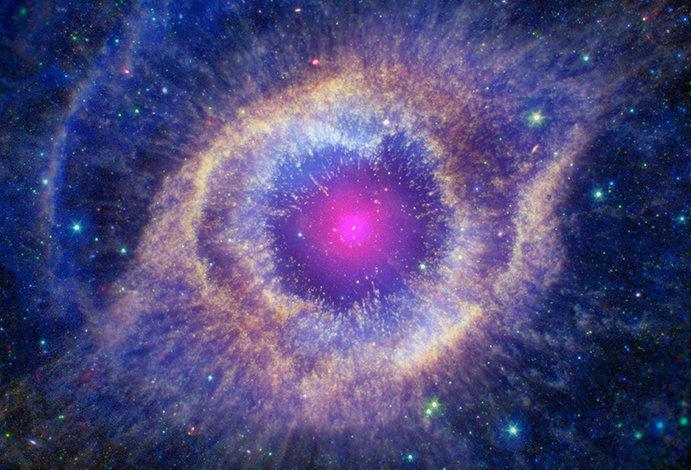
NGC 7293 (Helix Nebula)/NASA
Neutron Star: The Collapse of a Massive Star
For stars with masses between 8 and 25 solar masses, a different fate awaits. When these massive stars exhaust their nuclear fuel, their cores collapse. The outer layers are violently expelled in a supernova explosion, leaving behind an extremely dense core known as a neutron star.
During a supernova, the core collapses so violently that electrons are forced to combine with protons to form neutrons. This process releases vast amounts of energy, leading to an explosion that can outshine an entire galaxy for a short time.
A neutron star is typically only about 20 kilometers in diameter but has a mass about 1.4 times that of the Sun. The density is around 4 x 10^17 kg/m³, meaning a teaspoon of neutron star material would weigh about a billion tons.
Pulsars:
Neutron stars can rotate incredibly fast, and when their magnetic axis is misaligned with their rotational axis, they emit beams of radiation that sweep across space like a lighthouse. These are observed as pulsars, which flash at regular intervals. The most famous example is the Crab Pulsar, the remnant of a supernova observed in 1054 AD.

Messier 1 (Crab Nebula)/Hubble
Black Hole: The Fate of the Most Massive Stars
For stars more massive than about 25 times the mass of the Sun, the core collapse is so intense that even neutron degeneracy pressure is insufficient to halt the gravitational collapse. The core continues to collapse into an infinitely dense point known as a black hole.
Singularity and Event Horizon
A black hole has a central singularity where all the mass is concentrated in an infinitely small volume, creating a gravitational field so strong that not even light can escape from within a certain radius, called the event horizon. The radius of the event horizon is given by the Schwarzschild radius, which depends on the black hole’s mass. For a stellar-mass black hole (about 10 times the mass of the Sun), the event horizon would be around 30 kilometers in diameter.
Supermassive Black Holes:
While stellar-mass black holes form from collapsing stars, supermassive black holes, found at the centers of galaxies, can have masses ranging from millions to billions of solar masses. It’s still an open question how these gigantic black holes formed, but their existence has been confirmed in galaxies like the Milky Way, where the supermassive black hole at the center is known as Sagittarius A*.

Sagittarius A*/Event Horizon Telescope
Supernova Explosions: Cosmic Fireworks
When a massive star ends its life in a supernova explosion, it not only leaves behind a neutron star or black hole but also disperses heavy elements into space. These elements (carbon, oxygen, iron, etc.) are crucial for the formation of planets and life itself.
Supernova 1987A:
One of the closest supernovae observed in recent times is SN 1987A, located in the Large Magellanic Cloud, about 168,000 light-years away. The explosion was bright enough to be visible to the naked eye and allowed scientists to study the process of stellar death in detail.
Cosmic Recycling
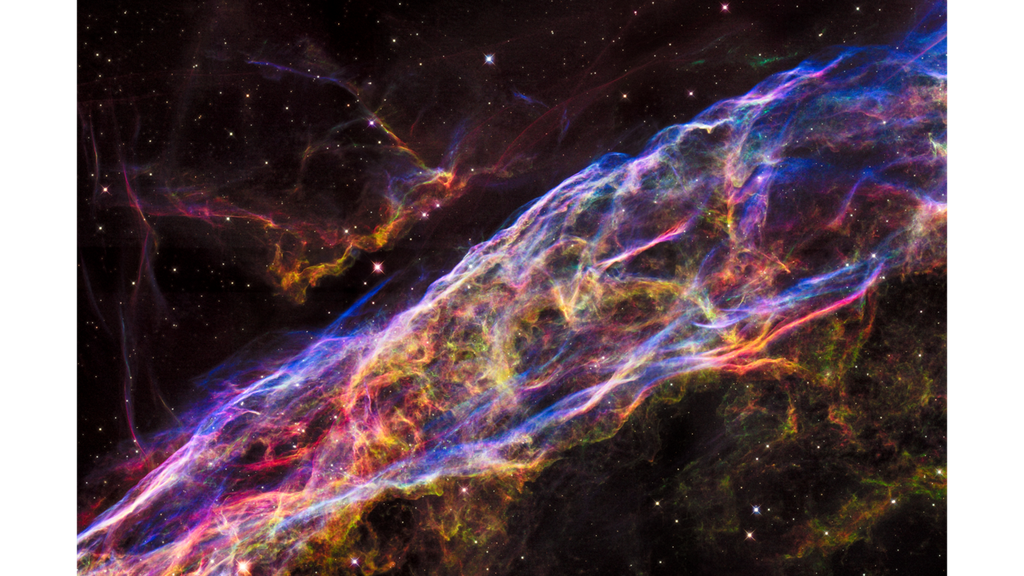
Veil Nebula/NASA
Even after their death, stars contribute to the universe. The gas and dust ejected during the supernovae enrich the interstellar medium with heavy elements. These materials form new stars, planets, and even life.
The iron in our blood and the gold that we wear are all formed in the core of ancient stars that exploded billions of years ago!
Next time you look up at the night sky, remember that the stars are not eternal—they are constantly evolving, some living quietly in the main sequence, while others are at the brink of their cosmic finale.
Emilin Clenson
Astronomer
No comments yet. Login to start a new discussion Start a new discussion